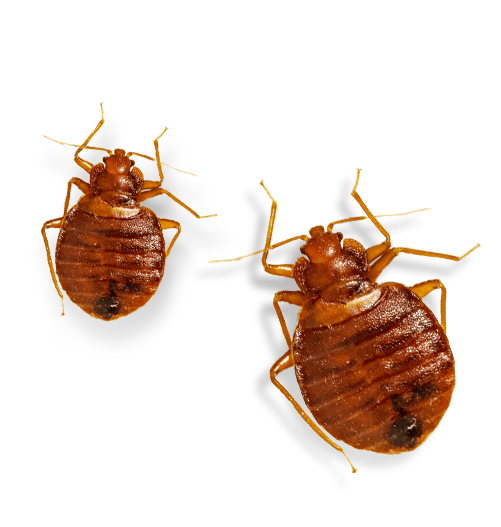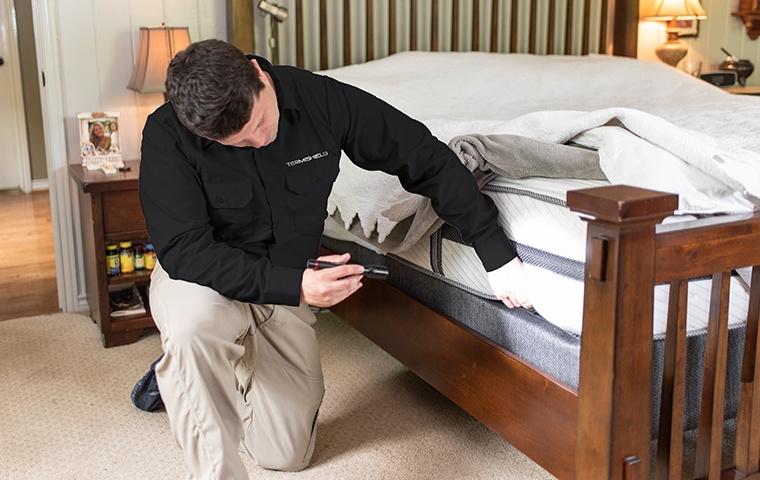Sorts Of Bug Control: Which Approach Is Right for Your Infestation?
When encountered with a bug infestation, the option of a suitable approach for pest control is critical in efficiently handling the scenario. By checking out the numerous types of bug control approaches available, people can make informed decisions customized to their unique situations, making certain a much more lasting and effective end result in pest elimination.
Chemical Pest Control
Chemical insect control includes the usage of artificial or naturally derived chemicals to take care of and eradicate pest populations efficiently. This technique is generally made use of in farming, forestry, and domestic settings to deal with a vast array of insects, including weeds, rats, and bugs. Using chemical pesticides can give quick and targeted solutions to pest infestations, making it a popular choice for many people and businesses.
One of the crucial advantages of chemical insect control is its capability to promptly eliminate insects, decreasing the risk of damage to plants, home, and human health. By utilizing specific chemicals that target certain parasites, this technique can successfully regulate infestations while decreasing injury to helpful microorganisms and the environment when applied correctly.
However, using chemical bug control likewise raises concerns about possible negative impacts on non-target species, water resources, and human health. It is important to follow safety and security standards, apply chemicals sensibly, and take into consideration different parasite control techniques to minimize these threats and guarantee lasting parasite monitoring practices.
Organic Insect Control
Organic insect control, additionally recognized as biocontrol, utilizes living organisms to reduce and manage insect populations normally. By utilizing the parasite's all-natural killers or pathogens, biological parasite control offers a ecologically friendly and sustainable service to pest administration.

Mechanical Pest Control
Making use of physical and hands-on approaches to take care of bug populations, mechanical bug control provides a different technique that does not rely on using living organisms or synthetic chemicals. This approach includes the usage of barriers, traps, or other devices to physically hinder or get rid of pests. By blocking bug entry factors or establishing traps to capture them, mechanical pest control can successfully minimize infestations without presenting chemicals right into the environment.
One typical instance of mechanical insect control is using mesh displays on doors and windows to stop insects from going into structures. This basic yet effective technique works as a physical barrier, keeping bugs out while permitting for proper air flow. In addition, devices like mousetraps, fly swatters, and ultrasonic repellents fall under the mechanical bug control group.
While mechanical pest control techniques can be labor-intensive and call for regular monitoring and maintenance, they use a lasting and eco-friendly service for handling parasite problems. By combining different mechanical methods, homeowner can create an extensive insect control method that lessens dependence on chemical pesticides.
Physical Bug Control

Some common physical parasite control techniques consist of making use of obstacles such as screens or nets to protect against insect access, traps to catch and remove bugs, and hand-picking to literally remove parasites from plants or structures. Furthermore, techniques like warm therapies can be used to manage parasites like bed bugs by increasing the temperature level to levels that are deadly to the pests.
Physical pest control is especially valuable in integrated insect monitoring (IPM) strategies, where several bug control approaches are combined for efficient bug monitoring Bonuses while minimizing the use of chemicals. By using physical parasite control techniques, individuals can efficiently attend to parasite infestations with minimal environmental effect.
Integrated Bug Monitoring
When applying physical pest control methods as part of insect administration methods, Integrated Bug Monitoring (IPM) becomes a thorough approach that leverages various techniques to efficiently manage pest populations. IPM concentrates on lasting avoidance of parasites via a mix of organic, social, physical, and chemical devices tailored to particular insect problems. By integrating multiple control tactics, IPM aims to decrease the threats linked with parasites while likewise lowering dependence on chemical remedies.
One trick element of IPM is the emphasis on monitoring and assessing pest populaces to figure out the most suitable original site control methods. This aggressive strategy enables for early intervention and targeted methods, causing much more efficient parasite monitoring. Furthermore, IPM promotes eco-friendly practices by focusing on non-chemical control techniques and only making use of pesticides as a last resort.
Final Thought

By making use of the parasite's all-natural killers or microorganisms, biological insect control provides a environmentally friendly and lasting solution to pest management. - Kings best pest control cincinnati
Using manual and physical approaches to take care of insect populations, mechanical parasite control uses an alternate approach that does not depend on the usage of living microorganisms or synthetic chemicals.A reliable technique to handling pest populaces without depending on chemical or organic techniques involves the usage of physical insect control techniques.When applying physical insect control approaches as part of pest administration techniques, Integrated Parasite Administration (IPM) arises as a detailed approach that leverages different techniques to successfully control pest populaces. Chemical pest control includes the usage of pesticides, organic insect control makes use of natural predators, mechanical parasite control includes physical obstacles, physical pest control includes capturing or removing bugs, and incorporated insect monitoring combines several approaches for a holistic technique to pest control.
Comments on “King-size Bed Pest Pest Control Expert Cincinnati: Pro Bug Solutions”